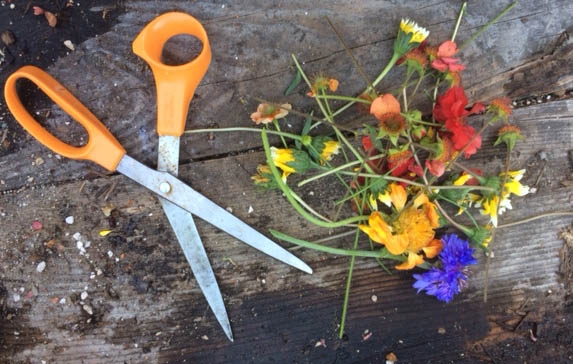
- Deadheading may prolong the bloom time of perennials
- Deadheading may enable annuals to flower continuously through the summer
- Deadheading may allow annuals to maintain a more attractive growth habit
- Deadheading will prevent seedheads from forming, thereby preventing reseeding where you don't want it
- Deadheading can make your garden look neater
- Deadheading may be a theraputic form of stress relief!
In order to deadhead, you need only simple tools: pruning shears or scissors (even sometimes your fingers) and a little bit of time. Once you've removed the flowers, you can drop them on the soil by your plants and they will contribute more organic matter to the soil as they decay or you can add them to your compost pile. The reason deadheading works is that it tricks the plant into continuing to flower in an effort to complete its reproductive cycle. I've successfully kept native wildflowers such as Clarkia and Tidy Tips blooming for months by deadheading. Other flowers which respond well to deadheading include bachelor's buttons, blanket flower, coneflowers, cosmos, dahlias, geums, roses, salvia, snapdragons, sunflowers and yarrow. Of course, deadheading is an optional task, but if you do it, you may be able to enjoy your flowers for just a little bit longer!
Resources:
http://ucanr.edu/sites/Tuolumne_County_Master_Gardeners/files/220858.pdf
http://ucanr.edu/sites/mglaketahoe/files/258664.pdf
http://ucanr.edu/sites/MarinMG/files/147779.pdf
Don't forget to subscribe to our blog so that you receive an email notification when a new post goes up. If you have questions, contact us online, by phone or in person to get answers to your gardening quandaries!